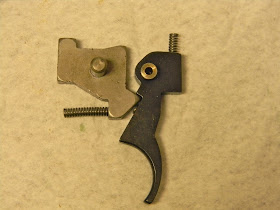
At least the compression tube can be disassmbled from the gun after removing only six bolts.
No damage to the face of the piston after over one hundred shots, so that's the good news.

No pics, but while I had the gun apart, I checked the bolt o-ring, but it was fine. The next largest o-ring I had on hand didn't fit into the breech anyway.
Went through the box of mainsprings and found a similar spring that was about 0.750" longer. Same OD, same ID. I'll probably end up ordering a new higher quality spring from Air Rifle Headquarters. The gun went back together and velocity increased to 600 fps for about twenty shots then dropped off to 580. A drop of oil on the sides of the transfer port o-ring showed a leak like a breaching whale. I'm getting bored with all the gun's idiosyncrasies, I stripped the compression tube again (six bolts!) and degreased the seats for the o-ring seal with acetone. Glued the o-ring into place with a cyanoacrylate. With the port sealed, velocity climbed to a high of 620 with the .20 cal H&N wadcutter. Another hundred shots and the velocity has stabilized at 615.
The washer in the compression tube is certainly disrupting the airflow, not to mention the square-shaped channel of the air transfer slot transitioning to round then making that ninety degree turn inside the bolt nose. Way too much turbulence in the original design. So, a replacement spring seems like potentially the most bang for the buck in terms of effort. When (if?) I strip the gun again after sourcing a different spring, I'll also try a different piston seal. I've got four more on order.
Probably something different next time around. Need a break from this one for a while.























